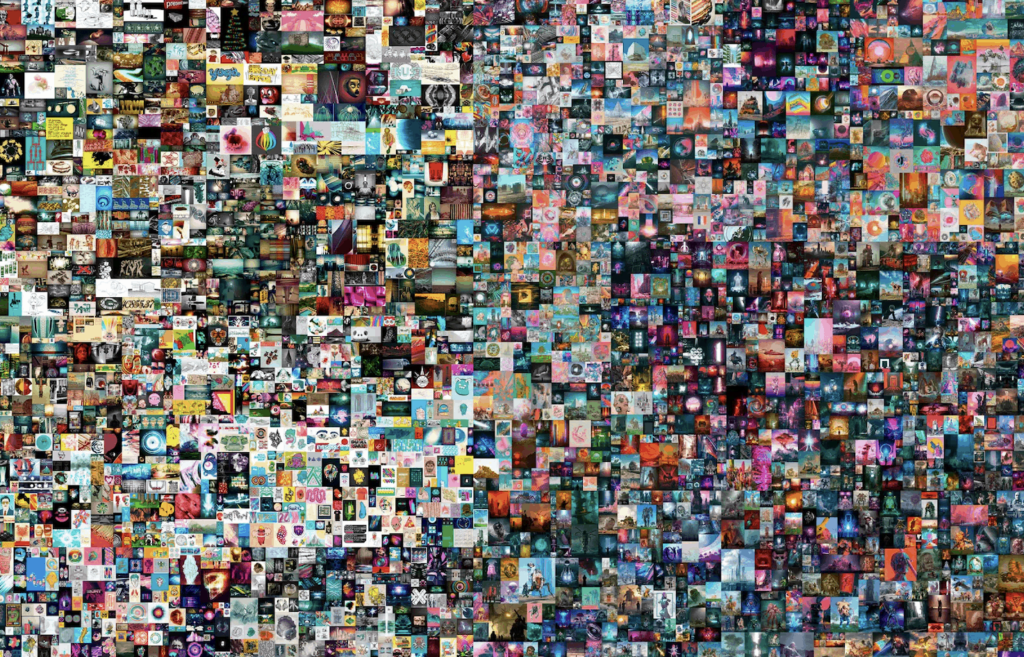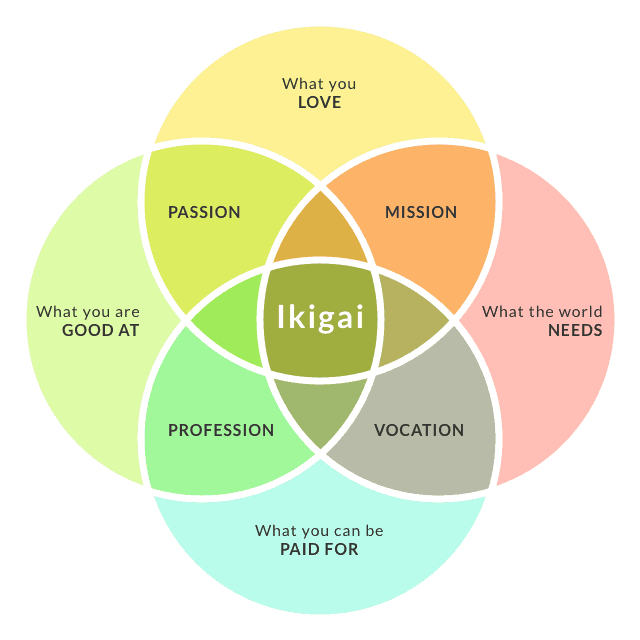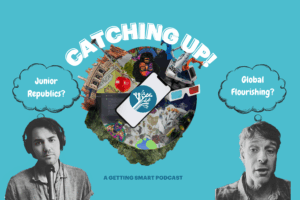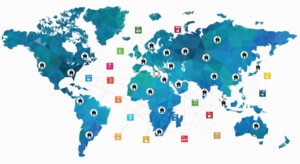Human Expression: Why It Should Be A Global Goal And How Crypto Can Help

The United Nations’ Sustainable Development Goals are a powerful collective commitment to the most pressing challenges of our time. For a complete list of the most important issues of our time, we add emerging opportunities of biotechnology and understanding the brain as well as the threats of nuclear war and cybersecurity.
To this list of important and urgent issues, powerful human expression belongs on the list. We are the stories we tell ourselves–and artists, authors and advocates are the lead storytellers.
The World Economic Forum said, “Arts and culture are key ingredients of a healthy society, helping people to interpret the world and each other.”
Seth Godin’s list of 23 problems worth solving include “dramatically new artistic methods for expression.”
Stated as a design challenge: how might we invite more people, particularly historically underrepresented groups, to fully express themselves? And, how might we create and support sustainable business models that combine public support and accessible and equitable markets for the arts?
The innovation economy is creating wealth at a staggering pace for the top 1% (particularly the top tenth of a percent) widening the income and wealth gaps. Add the climate crisis, historical discrimination, and a global the pandemic and you have toxic levels of inequality–and conditions that suppress human expression.
As the global economy rebounds, the automation economy will continue to eat away at middle-income jobs, leaving a barbell economy of high-income knowledge work and low-wage service work. There is a need and opportunity to invest in the flourishing of culture and to create viable and sustainable careers in the arts.
With more global connectivity, opportunities for beautiful expression are becoming more numerous. Commerce platforms have made it easier to share: crafters have Etsy, authors have Amazon, musicians have Spotify, filmmakers have Netflix, and videographers have YouTube, TikTok, and Instagram. These platforms have aggregated big audiences and for some have created global markets but still a very small percentage of artists make a living wage on these platforms–and almost none of them stand to gain from the increase in value of their work over time.
Immersive art is an emerging form of expression that comes with new venues and business models. Visitors to “Immersive Van Gogh”, showing at a former music venue in San Francisco, are bathed in the glow of these animated laser projections. Less like a museum and more like theater or film, this new art relies heavily on ticket sales said the Economist.
Like other invention opportunities, a combination of new agreements and new tools will unlock new modalities and markets for expression and new business models for artists. Human beings have always thought about art as a medium — now expression is medium, and medium is business model.
For educators, the challenge is to integrate expression, emerging medium, and sustainable business models so that all young people have access to careers in expression.
Blockchain, Crypto & NFT
Distributed ledger technology like blockchain is now widely used to track goods through supply chains and beginning to be used to support portable student records. The decentralized record keeping system is also behind cryptocurrency like bitcoin and Ethereum. With the crypto marketplace Coinbase going public with a value of $85 billion, digital currency has reached an important plateau of legitimacy.
A month ago, the term non-fungible token (NFT) gained notoriety when digital artist Beeple sold Everyday, a collage of 5,000 images for $69.3 million. The blockchain token can’t be copied (i.e., is non-fungible) but ironically digital versions of the images can be widely shared–which actually increases the value of the token.
NFT create a unique way to make digital art and artifacts collectible, sellable and authentic. People have sold first tweets, digital art, New York times articles and more.
NFT creators can choose a lump sum payout or ongoing royalties which may grow in value as the art appreciates (perhaps the first time artists have stood to gain with growth in value).
These digital artworks are infinitely reproducible, but the NFT provides original proof of ownership. Collectibles like sports cards are taking on a new life as buyers are shifting from buying a piece of cardboard to buying a full digital play.
As quoted in this Time article, Jazmine Boykins, who goes by the online handle “BLACKSNEAKERS”, and who has sold more than $60,000 in NFT art over the past six months, said “At first, I didn’t know if it was trustworthy or legit […] But to see digital art being bought at these prices, it’s pretty astounding. It’s given me the courage to keep going.”
This is coinciding with a moment when digital art is gaining in popularity and value and as a society we are continuing to redefine what we mean by the terms of art and expression. Everything from a concept album to a tik tok, a meme to a Monet — these all now fall into buckets of art and expression with a price tag attached.
What does this mean for education?
A future fueled by commerce platforms and blockchain transactions requires a different approach to education. The third dimension of “business model” must be incorporated into most

courses where the primary focus has been passion. Similar to the Japanese concept of Ikigai, we must consider work that we can be paid for. Fortunately, these advances in tech are making it easier to monetize new passions and pursuits like never before.
These new models also could change the payment structure of work. The future could look like a democratized labor force, sourcing competitions for the best “content creation” where the payout is done through the blockchain and therefore requires very little additional infrastructure. This idea is explored at length in a wandering and wonderful Tim Ferris conversation with Balaji. In order to prepare young people for an innovation economy with lots of opportunities but without predictable safety nets, we must develop entrepreneurs with a strong sense of agency about their gifts and interests.
We can no longer teach the expressive arts without introducing new modes of expression, new market platforms, and new business models with the opportunity to make a career in the arts sustainable. It’s time to teach creativity not just in the arts but in audience development and entrepreneurship.
An emerging example of this integrated approach is the Big Thought’s Creator Archetype, five skillsets the Dallas nonprofit uses to design programs and schools that lead to sustainable careers.

The Kansas City Art Institute recently partnered with the UMKC business school to create a business in art minor to support their graduating artists in being able to make the connection between passion and work.
The future of human expression will have a broader base of participation with sustainable careers for musicians, artists, authors, and activists. It will be more distributed, less curated and concentrated, more about artist and less about intermediaries. It will leverage crowdsourcing, collaboration and new modes of expression; it will swamp old power broker business models and copyright laws; it will build on tradition and conjure value from thin air.
Schools and colleges can help create this new flourishing of culture by integrating the expressive arts with emerging technology and new business models so that more young people graduate ready for sustainable arts impact.
This post was originally published on Forbes.







Tom Vander Ark
from Daniel Rabuzzi: The School of Interactive Arts (based in NYC), a program of Urban Arts Partnership, provides game design/coding units that can be taught in a computer science, arts, or technology classroom. We've been serving NYC public schools for over 30 years and we have a proven track record of getting students engaged and excited about learning computer science. Offers A 20-hour hybrid / remote game design unit for any class with teacher training + CTLE credits. Has 20,000 square feet state-of-the-art media/comp sci/tech space (including a recording studio!) by Union Square here in Manhattan,